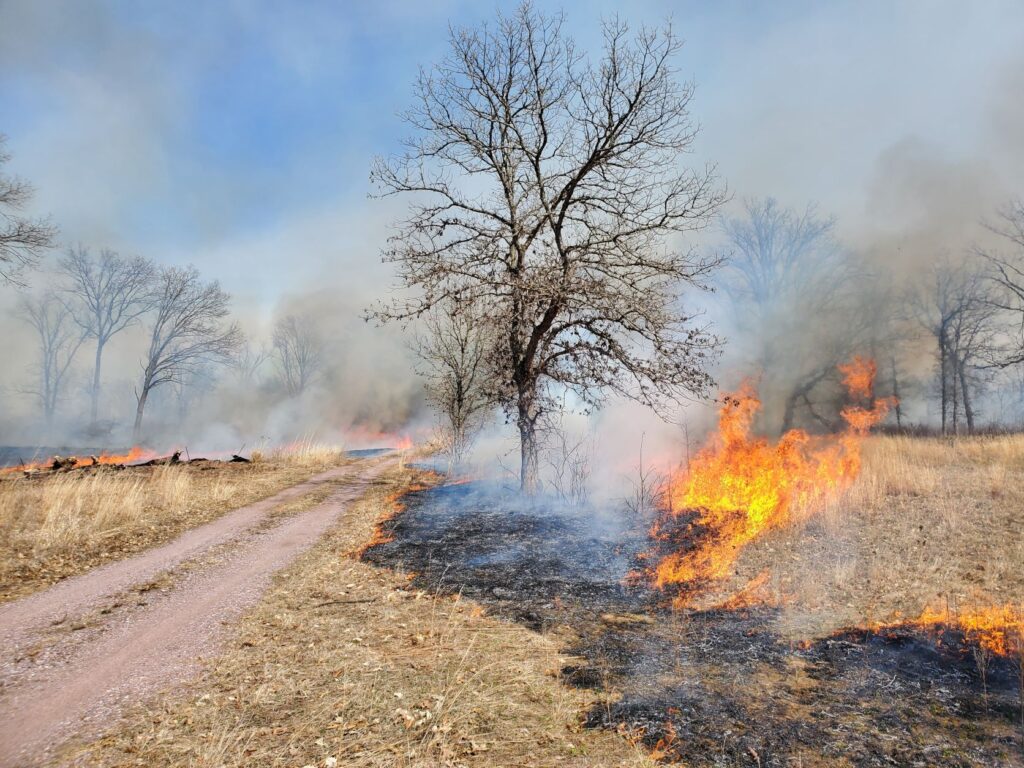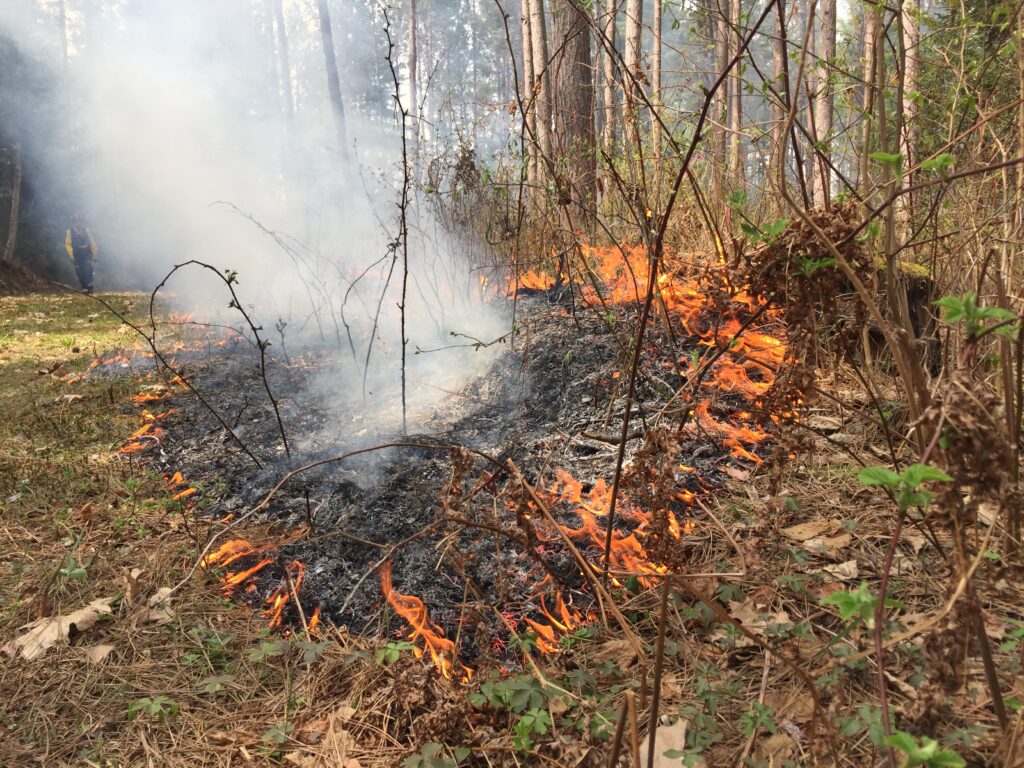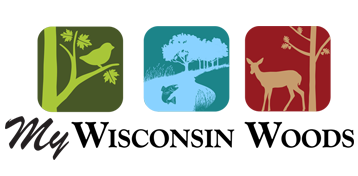
Managing Woodlands with Prescribed Burns
Managing a woodlot means looking back and moving forward. “Forest regeneration is messy,” says Brad Hutnik, Wisconsin DNR Silviculturist/Forest Ecologist. “It involves harvesting, and it may require prescribed burning. Foresters work with the stand they have right now, but they are really interested in the stand that they will be passing on to future generations.”
History of Burning Woodlands
“As we incorporate fire into our woods management tool kit, we talk about ecology like it is a new science from the 1970s, but woods management with fire has been carried out in this area by indigenous communities for thousands of years,” says Michele Witecha, Wisconsin DNR Prescribed Burn Specialist. “In some states, fire was more lightning induced, but we have an extensive history of managed fire that these communities used for local natural resource management, land clearing, and cultural/ceremonial purposes.”
That changed when European settlers moved into the area. “In the U.S., the very first conservation laws were centered around fire suppression,” says Jed Meunier, Research Scientist with the Wisconsin DNR Division of Forestry. “After the devastating 1871 Peshtigo Fire that killed 1,500 people, we thought we were going to lose all of our forests to fire, and the mantra at the time was: if we don’t cut it all down quickly, fires are going to get it first. But at the same time a lot of low severity fires were burning all over Wisconsin. Looking back, many of those low-severity fires were actually beneficial.”
Why burn?
Our oak resource is aging. “We can regenerate oak on sandy soil, but elsewhere in the state you don’t see many young stands of oak or even young oaks in the forests,” says Hutnik. “Historically, fire would have given oak an advantage. If fire came through, oak seedlings and saplings would sprout back more easily than some of their competition. That’s what created the oak savannas and forests. When you take away active fire management, the woods slowly convert to other types of trees.”
Mixed woods are more difficult to burn. “You can carry a fire if you have oak duff,” says Meunier, “but as you have more and more leaves from other trees, they hold more moisture and break down faster. They rot and create a wet blanket effect. As they become more common in the canopy, your leaf litter is made up of more and more of these mesic species — types that thrive on moderately moist soils. That is hard on oak seedlings that like contact with soil.”

“You want to have trees of different age classes in your stand,” says Michele Witecha, Wisconsin DNR Prescribed Burn Specialist. “It really matters that we can actually see oaks disappearing from age classes across Wisconsin’s landscape. We are looking at tree survey data for the whole state, and there is negligible oak regeneration in the 0 to 30 years age class.”
Looking to the future, this is a gap that should not be extended. “We know oaks are predicted to be resilient in the face of climate change,” says Hutnik. “So if we have oak in a variety of ages, that will be really important.”
According to findings from the USDA Climate Change for Southern Wisconsin Forests: Site-level consideration and adaptation, oak openings may be the most adaptable in large landscapes where they are mixed in with prairie and oak woodlands. Small, isolated woodlots (more common in southeast Wisconsin) will be more vulnerable, but even there, sites that have been managed with fire will have a more open understory and may remain more adaptable.
“We have the benefit of still having many oaks in our forests,” says Hutnik, “but we are not giving future generations that guarantee. If we are not careful, we may be some of the last people that get to see forests dominated by oak in parts of Wisconsin.”

“If we want oak on dry mesic sites, we are going to have to come up with new tools,” says Meunier. “Oak is a fire dependent species, and I’m convinced that we can use fire to get the forests we want. Also, if we get a bad drought year, and you have been managing with fire — your forest is much more likely to survive. We can make our stands — whether they are hardwoods or pines — more resistant to catastrophic fire by burning them with low severity fire.”
A management regimen that includes prescribed fire can improve many oak stands. Benefits include:
Site preparation for natural regeneration also makes it easier to plant the site.
- Site preparation for natural regeneration also makes it easier to plant the site.
- Suppression and control of interfering vegetation and invasive species.
- Conveying a competitive advantage to species adapted to fire. Oak seedlings re-sprout vigorously after fire. Other trees may die or not thrive after a fire. After several burns, the percentage of oaks in an area will tend to increase.
- Benefits to local wildlife that utilize (and seek out) recently burned and revitalized areas.
What about burn damage?
Will burning lower the quality of trees and reduce income from a timber sale? There is a growing body of research that says we have overestimated the potential for tree damage in burns. According to Witecha, “If you do a prescribed burn and try to conduct a timber sale the next year, it may not look as desirable, but we are consistently finding that the amount of damage to timber is less than anticipated.”
How to burn safely
Experience with burning prairie does not properly prepare you for a woods burn. In burning under a forested canopy, you have to be more careful about how intense the fire gets. “If the fire is too hot you may scorch the trees higher up,” says Witecha. “So there are different considerations to be made when burning in the woods. On most of the woodland units where we burn, we’re choosing weather conditions that create more manageable fire behavior and flame lengths, so the fire clears debris and provides all these benefits without any detrimental effects to the trees themselves.”

When to burn
No one should light any fire without first consulting the DNR.
- WISBURN With this interactive map you can see the fire danger, DNR burn restrictions, current wildfires, and prescribed burns in every county. It is updated after 9 a.m. every day. Keep in mind that DNR burn restrictions apply only in areas of the state where the DNR has jurisdiction for fire response. At this site, you can see if burns in your area are under regulatory control by the DNR. Witecha advocates working with a local DNR staff. “Most of our forestry field staff are also involved in the prescribed fire program, and they can give you tips on good weather parameters and when to burn. Typically the woods don’t dry out in the spring, and you may well end up choosing to burn in the late summer or fall.
The council website provides a number of resources for private landowners who are interested in learning more about conducting burns. They offer tips and tools for burn planning and other useful considerations when conducting a safe prescribed burn.
- Fire Management Dashboards Users can view current and past DNR prescribed burns occurring across the state and in their area, making it easier to visit recently burned sites to see the effects in-person.
Witecha advocates working with local DNR staff. “Most of our forestry field staff are also involved in the prescribed fire program, and they can give you tips on good weather parameters and when to burn. Typically the woods don’t dry out in the spring, and you may well end up choosing to burn in the late summer or fall.
Burn Contractors
“It’s amazing what you can learn about your own piece of land as you work with it,” says Witecha. “Over time you will learn what humidity, temperature and wind speed are best for your spot. But not everyone has that capacity and equipment. If you don’t feel confident to burn by yourself, seek a burn contractor. The Prescribed Fire Council of Wisconsin www.prescribedfire.org keeps a burn contractor list that includes the majority of the burn contractors out there. Look for a burn contractor who has experience working in woods.”
“In my experience,” she continues, “the biggest risk to our Wisconsin forests is inactive management. If you are doing anything to improve the vertical structure, the basic composition and the regeneration of our key tree species, then you are doing something good. It does not have to be prescribed fire. Simple, active management is better than no management at all. No management is how we are losing some tree species.”
She concluded, “All of the places that we think are beautiful to go birding, that give us those uncluttered long-distance site lines that hunters like, all the spots where we go to see wildflowers — the kinds of ecosystems that people are so often seeking — they may not realize it, but these places all depend, to a certain degree, on being sustained and protected with prescribed fire.
By Denise Thornton
All Photos Courtesy of WI DNR
